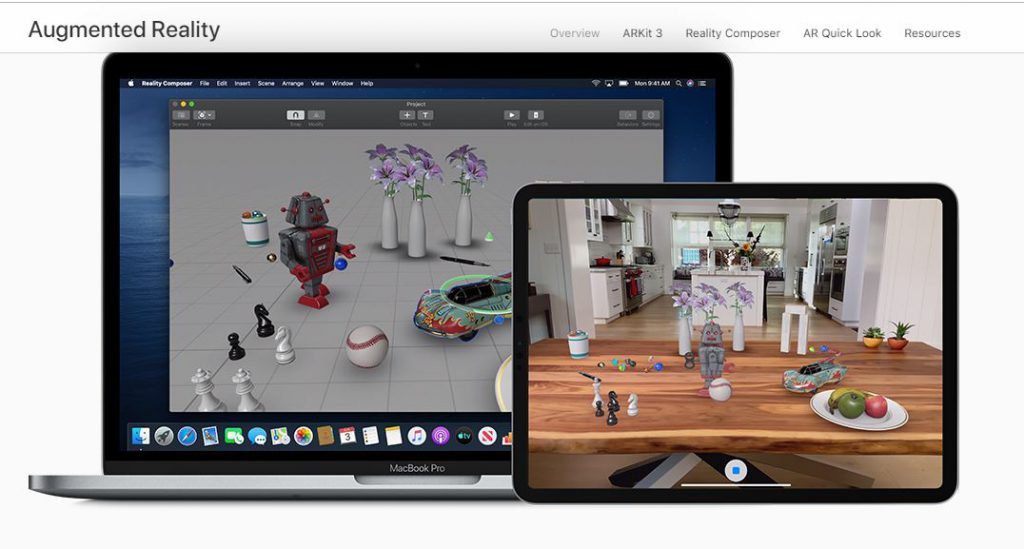Augmented Reality has recently shown significant growth in commercial support from some big names of tech like Google, Apple, Microsoft, and Amazon. According to a Gartner’s prediction, 100 million users will shop actively using Augmented reality by 2020. Also, Gartner indicated that the amount of AR-enabled devices is expected to stretch to almost 2.5 billion by 2023.
Moving ahead of these predictions, we can easily see the upsurge of AR around us in many different ways. AR showed a visible growth in 2018 and continued to make its progress towards the future. Since May 2019, the installed user base for AR-supporting mobile devices increased to 1.5 billion.
When it comes to AR integrated Mobile app development, the trend is evolving with advanced opportunities and multiple possibilities. Let’s elaborate in detail that how can we make the most of AR integrated mobile App development in 2020 and beyond.
As we are moving into 2020, it is a common concern of the tech industry that how the converge of Augmented Reality and Mobile App development succeed in 2020 and beyond. We expect that the following trends will shape the future of augmented reality over the next couple of years
Augmented Reality — A new way of Shopping
As we mentioned the Gartner prediction that 100 million users would be using AR integrated shopping apps by 2020, we can count it under the hottest trends of recent years. Additionally, Augmented reality made visible growth in the retail shopping experience. And, the affluent mobile devices leveraging AR speaks for a promising development in this sector. The AR experience is getting common instead of a novelty in many retail stores, including Ikea and Sephora. Now, retailers and customers are comfortable using them as a part of their everyday experience.
This experience is becoming a preferred choice for customers for their daily shopping experience. According to a BRP report, 36% of consumers preferred shopping at a store offering virtual mirrors to envision themselves in different clothes and cosmetics. With such expectations of buyers, more and more retailers are showing interest to deploy Augmented reality applications within a few years.
Retailers Adopting Augmented Reality
There are many companies who have come up with the customer demands for AR shopping experience. Many retailers, like American Apparel, Lacoste, and Uniqlo, have leveraged AR in their fitting rooms to provide try-before-you-buy options in AR spaces.
Brick-and-mortar has deployed smart mirror technologies that scan RFID tags and has the ability to provide recommendations to the users.
IKEA’s mobile app enables its users to point their phones at spaces where they want to place different products and see how different products look like in their own homes.

Augmented reality mobile app development is changing the way people shop.
Moreover, fashion, lifestyle, and makeup brands are all set to gain major attention from customers by leveraging the latest technologies that deal with facial recognition and provide personalized advice with Augment and virtual reality experience.

Mobile AR: Apple ARKit 3 and Google’s ARCore
The introduction of Apple’s ARKit and Google’s ARCore Software Development kits has set a standard for mobile AR app development. This has also brought a massive increase in the amount of mobile AR-enabled devices and active users during the past 3 years.

When the ARKit was introduced to the mass mobile users, Apple secured its market leadership. These advances in mobile AR placed it adjacent to the headset-based AR, and we can still see visible ARKits dominance over ARCore. However, ARCore has grown to almost 10 times its value after its release.
From December 2018 to May 2019, the installed base of ARCore-compatible Android devices increased from 250 million devices to 400 million. Seeing this, the major smartphone manufacturing companies are getting ahead with the aim that they will bring improvements in AR compatible devices in the mobile market.
Remote Assistance through Shared Augmented Reality
Often collaborative efforts like conference calls and meetings are undervalued due to the lack of a direct personal presence. However, with AR, a mixed-reality setting can be created where everyone on the conference call can see each other as if they are sitting next to each other. So, the environment becomes more socially conducive.
In this regard, Microsoft has brought forth a video-calling system that uses AR to represent participants in a holographic style. Further, Cisco has also made its development in AR technologies with a project Musion that compiles its networking products.
Augment reality is still in the phase of growth and the adoption of this technology is facing several gusts. Specifically, the use of headsets is the most common use-case for this technology.
Currently, collaboration and remote assistance sessions based on AR can be a way that promotes innovation in AR technology. By making use of existing data streaming, assistance providers can join more directly in the configuration, maintenance, and repair processes. Shared AR spaces are also a natural fit for conferences, education, and training sessions.
Apparent in video gaming experiences, users perceive collaborative AR experiences as highly engaging and worth playing. Also, the challenges are cutting down the costs, finding use cases that allow wider adoption and making wearable more accessible. AR-based collaboration and remote assistance remained in the category of underdeveloped sectors that would require improvements as we head towards the 2020s.
Augmented Reality Transforming Mobile Experience
Augmented reality has so far transformed mobile application experience. It has made many advances in different categories. A huge impact has seen in the gaming industry. It has replaced traditional games and with real-time experience to the users. AR is helping mobile app developers to engage more users with an enhanced real-world environment.
Shortly, this technology has been introduced in many sectors, including healthcare, automotive and real estate. Further, with the advancement in AR integrated apps and devices, it is bringing transformation in diverse industries.
Another example of AR we can be observed in photo filters available at social media mobile apps. Hence, AR has enhanced the visualization, tracking, and interaction aspects of the physical world.
AR-powered solutions for the enterprise are also making its pace towards a better future with AR. A Forrester report indicated that by 2025, about 14 million American workers would expectedly use smart glasses regularly on their jobs.
Moreover, ARCore and AR Kit helps mobile app development solution providers to bring advanced AR mobile applications for users.
Summing Up
Augmented reality has so far made evolution in the automotive industry. In particular, Hyundai has become a leader in AR research that takes it beyond a common motorist’s experience.
Based on experts’ predictions, the AR industry will stretch to a total amount of $25B in 2025. The growth is, however, expected to grow steadily. That is how the future of augmented reality is shaping up. And, the investments from the above-mentioned business industries and domains will make it even brighter.
These facts and figures related to the future of AR and mobile app development seem quite enticing. Consequently, we expect in the future that the converge of AR, and Mobile app development will become a must-have technology for the mobile app development process.








